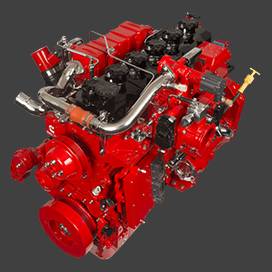2 月 . 10, 2025 10:40 Back to list
brake drum vs rotor
When it comes to the braking system in any vehicle, understanding the differences between brake drums and rotors is essential for both safety and maintenance. The two components serve the same purpose — to stop the vehicle — but operate in distinctly different manners.
One of the frequently noted differences between these two systems involves maintenance and repairs. Brake drums, being enclosed units, offer protection from environmental elements, which might reduce corrosion, yet complicate inspections and repairs. Any wear and tear within requires the entire drum to be removed for a thorough inspection, which can be labor-intensive. Brake rotors, on the other hand, afford technicians easy access, allowing routine checks for damage or warping, thus facilitating proactive maintenance. Rotors can also be resurfaced multiple times, thereby extending their lifespan, although this is contingent on remaining structural integrity measured against their minimum thickness. Over time, the choice of brake system can deeply influence the total cost of vehicle ownership and maintenance. In terms of performance, brake rotors offer consistent performance even under severe conditions, making them ideal for vehicles where high-speed braking and quick stops are regular. Motorsports and high-intensity driving situations prefer disc brakes, accounting for their reliable heat management and superior responsiveness. Brake drums, by comparison, are effective in low-speed applications and can be long-lasting if maintained well. They provide adequate, often sufficient, performance for many standard driving conditions. Selecting between brake drums and rotors is not merely a question of cost, but rather an informed balancing act between application requirements, performance expectations, and long-term vehicle operation. For everyday commuting vehicles, a combination of disc brakes up front and drum brakes at the rear may result in a cost-effective, reliable braking system, whereas high-performance or heavy-duty vehicles benefit more from rotors at all four corners. Understanding these distinctions is crucial, whether you are acquiring new brakes or simply trying to optimize your vehicle’s safety and performance. Emphasizing expertise in vehicle mechanics and seeking trusted professional guidance help in making informed decisions tailored to specific driving needs and safety considerations.


One of the frequently noted differences between these two systems involves maintenance and repairs. Brake drums, being enclosed units, offer protection from environmental elements, which might reduce corrosion, yet complicate inspections and repairs. Any wear and tear within requires the entire drum to be removed for a thorough inspection, which can be labor-intensive. Brake rotors, on the other hand, afford technicians easy access, allowing routine checks for damage or warping, thus facilitating proactive maintenance. Rotors can also be resurfaced multiple times, thereby extending their lifespan, although this is contingent on remaining structural integrity measured against their minimum thickness. Over time, the choice of brake system can deeply influence the total cost of vehicle ownership and maintenance. In terms of performance, brake rotors offer consistent performance even under severe conditions, making them ideal for vehicles where high-speed braking and quick stops are regular. Motorsports and high-intensity driving situations prefer disc brakes, accounting for their reliable heat management and superior responsiveness. Brake drums, by comparison, are effective in low-speed applications and can be long-lasting if maintained well. They provide adequate, often sufficient, performance for many standard driving conditions. Selecting between brake drums and rotors is not merely a question of cost, but rather an informed balancing act between application requirements, performance expectations, and long-term vehicle operation. For everyday commuting vehicles, a combination of disc brakes up front and drum brakes at the rear may result in a cost-effective, reliable braking system, whereas high-performance or heavy-duty vehicles benefit more from rotors at all four corners. Understanding these distinctions is crucial, whether you are acquiring new brakes or simply trying to optimize your vehicle’s safety and performance. Emphasizing expertise in vehicle mechanics and seeking trusted professional guidance help in making informed decisions tailored to specific driving needs and safety considerations.
Latest news
-
Brake Drum for Kamaz Trucks Durable OEM Replacement & High Performance
NewsMay.30,2025
-
Brake Drum Man High-Quality Drum Brake & Shoe Solutions
NewsMay.30,2025
-
High-Performance Brake Drum for Kamaz Trucks Durable Drum Brake Components
NewsMay.29,2025
-
Brake Drum Man High-Quality Drum Brake Drums & Brake Shoes
NewsMay.29,2025
-
Brake Drum MAZ High-Performance & Durable Replacement Parts
NewsMay.29,2025
-
heavy truck brake drums
NewsMar.07,2025
